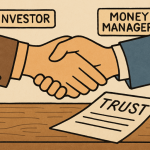Businesses encounter major difficulties when deliveries of their products fail to meet scheduled timelines. Delivery problems lead to both financial losses and customer dissatisfaction. The expansion of global business operations requires a dedicated person to ensure efficient operations across all stages, from manufacturing to retail placement.
During 2023, more than 60% of global companies experienced delays and financial losses because of supply chain disruptions. These issues weren’t just about late deliveries. They cost billions and damaged reputations.
The increasing complexity of global trade requires businesses to employ professionals who can oversee operations from storage facilities to supplier agreements. One important leader in this area is the Vice President of Supply Chain.
This is not an ordinary office job. Their main job includes coordinating the movement of products from production facilities to their final destinations. They make critical decisions that can impact the entire company when they make errors. Now we will examine what this position entails daily and explore why it is so critical.
Overseeing the Whole Supply Chain
The Vice President of Supply Chain manages every aspect of the supply chain process. They manage all processes that deliver products from manufacturing to reaching consumers. This aspect of their role includes overseeing raw materials management as well as production schedules and shipping operations, plus handling product returns.
When a toy company needs new toys available before the holiday season starts, the VP develops a strategy that monitors part delivery times, assembly speed, and store shipment procedures.
Managing People and Teams
The position requires leadership of various teams, including those responsible for logistics, procurement, and warehousing functions. The VP shares responsibilities but leads others to execute proper procedures. They recruit managers for the teams and provide them with training before ensuring all team members collaborate effectively.
Communication forms a major portion of their professional responsibilities. The VP communicates with suppliers and partners along with company leaders. When unexpected problems arise, such as shipments getting stuck at a border, they take charge to solve the issue rapidly.
Handling Big Risks
The supply chain faces numerous potential threats. Shipments can be delayed by natural disasters or political issues, along with strikes. The VP needs to prepare for potential problems by planning. The company maintains backup plans to ensure product delivery remains on schedule even when unexpected issues arise.
The COVID-19 pandemic caused numerous supply chains to stop operating. Forward-thinking VPs helped their companies escape delays by sourcing alternative suppliers or modifying logistics strategies.
Making Smart Choices with Data
Through computer systems and software, the VP evaluates shipping timeframes alongside cost and inventory data. They don’t guess. They base their decisions on real data and numerical analysis.
The VP investigates the cause when they detect slower performance in one specific warehouse. When shipping costs increase, companies move to less expensive alternatives. The company saves money while operations continue to run smoothly.
Working with Other Leaders
The VP Supply Chain doesn’t work alone. The VP Supply Chain maintains constant communication with the finance team and marketing executives, as well as the CEO. In partnership with other leaders, they determine which products to produce and the best methods to distribute and sell them.
When launching a new phone model, the marketing team requires assistance from the VP to ensure that stores maintain sufficient stock on shelves.
Improving the System
A competent Vice President makes continuous efforts to improve operations. They could develop methods to accelerate shipping, minimize waste production, or adopt superior software. These small changes can save millions.
They collaborate with external companies that develop inventory management programs and package tracking systems. They observe the operations of other businesses to introduce innovative concepts to their own teams.
Making Sure Rules Are Followed
Every country maintains specific regulations that dictate the contents and methods of shipping goods. The VP needs to know these laws to prevent potential problems. This includes safety rules, taxes, and customs.
Breaking these rules results in the company facing fines or losing the ability to sell products. The VP reviews necessary documents and educates their team while keeping track of any new regulations.
How the Role Helps the Whole Business
A strong role of a VP in supply chain helps the company make more money, avoid problems, and keep customers happy. Successful delivery times and low expenses lead to benefits for all stakeholders.
It also protects the company’s reputation. People don’t like delays or broken items. A smart VP makes sure those problems happen less often.
Final Thoughts
The Vice President of Supply Chain holds a vital position within large organizations. They don’t just sit at a desk. They handle actual problems while leading teams and deciding on critical matters that impact the entire organization. In an industry where delays result in multi-million dollar losses the correct professional in this position becomes essential rather than optional.
This role deserves attention from anyone interested in understanding business operations and logistics. Your next on-time order delivery is probably due to meticulous planning by someone important who might be a VP of Supply Chain.
Lynn Martelli is an editor at Readability. She received her MFA in Creative Writing from Antioch University and has worked as an editor for over 10 years. Lynn has edited a wide variety of books, including fiction, non-fiction, memoirs, and more. In her free time, Lynn enjoys reading, writing, and spending time with her family and friends.















